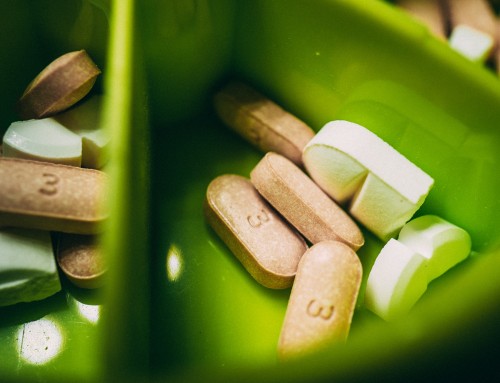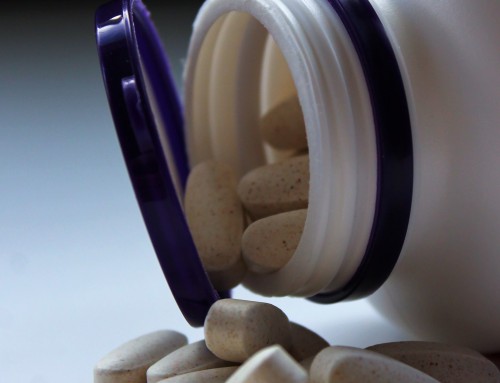EAA’s – A Brief Guide
Essential Amino Acids – A Brief Guide
Key Points
-
Body Cannot produce them
-
Body cannot store them
-
9 Essential amino acids
With the amount of amino acids required for the body it can be confusing to know what is what. This guide will help decipher what they are and its role in the body.
Essential amino acids are called this because they are needed in your daily diet as the body cannot produce these, the body cannot store these amino acids either so it is a requirement to replenish these everyday.
L-histidine
L-histidine is a semi-essential amino acid meaning that it is produced by the body but not in vast amounts. L-histidine aids in the synthesis of haemoglobin (2), tissue repair (3) and enhancing the immune system (4).
L-lysine
L-Lysine is an essential amino acid which has been found to aid in the increase of muscle mass (5) and helps in the absorption and metabolism of calcium (6).
L-methionine
L-methionine is an essential amino acid which has been found to help with liver function (7) and mood state (8).
L-phenylalanine
L-phenylalanine is an essential amino acid which is a precursor of melanin (9), dopamine (10) noradrenaline and thyroxine (11).
L-threonine
L-threonine is an amino acid which changes in the body to glycine. Glycine is one of the components of creatine which helps increase muscle growth and energy during exercise (12). When metabolised it acts as an amino acid and regulates blood sugar levels which can also control that amount of sugar released into the blood (13).
L-tryptophan
L-tryptophan is an essential amino acid which is required for growth in young children (14) and nitrogen balance in adults (15). There is also evidence that tryptophan supplementation can enable exercise to last longer due to an increase in pain tolerance (16).
L-valine
L-valine is an amino acid which has been found to aid in the development of muscle growth (17) and tissue repair (18).
Isoleucine / Leucine
Isoleucine / Leucine are Branched chain amino acids (BCAA’s). It is essential for protein synthesis which is stimulated after exhaustive exercise (19) as well as the critical metabolic process in muscle (20, 21). The metabolic roles of Leucine include energy production and the modulator of muscle protein synthesis via the insulin signalling pathway.
Summary
The plethora of Amino Acids that are available have a number of different roles within the body. There are numerous Supplements available that can help with getting access to them if you feel you may be deficient in any of them.
References
2 – Noort, D., Hulst, A. G., Trap, H. C., de Jong, L. P., & Benschop, H. P. (1997). Synthesis and mass spectrometric identification of the major amino acid adducts formed between sulphur mustard and haemoglobin in human blood.Archives of toxicology, 71(3), 171-178.
3 – Babizhayev, M. A., Seguin, M. C., Gueyne, J., Evstigneeva, R. P., Ageyeva, E. A., & Zheltukhina, G. A. (1994). L-carnosine (beta-alanyl-L-histidine) and carcinine (beta-alanylhistamine) act as natural antioxidants with hydroxyl-radical-scavenging and lipid-peroxidase activities. Biochem. J, 304, 509-516.
4 – Li, P., Yin, Y. L., Li, D., Woo Kim, S., & Wu, G. (2007). Amino acids and immune function. British Journal of Nutrition, 98(02), 237-252.
5 – Flakoll, P., Sharp, R., Baier, S., Levenhagen, D., Carr, C., & Nissen, S. (2004). Effect of β-hydroxy-β-methylbutyrate, arginine, and lysine supplementation on strength, functionality, body composition, and protein metabolism in elderly women. Nutrition, 20(5), 445-451.
6 – Civitelli, R., Villareal, D. T., Agnusdei, D., Nardi, P., Avioli, L. V., & Gennari, C. (1991). Dietary L-lysine and calcium metabolism in humans. Nutrition (Burbank, Los Angeles County, Calif.), 8(6), 400-405.
7 – Cabrero, C., Duce, A. M., Ortiz, P., Alemany, S., & Mato, J. M. (1988). Specific loss of the high‐molecular‐weight form of S‐adenosyl‐L‐methionine synthetase in human liver cirrhosis. Hepatology, 8(6), 1530-1534.
8 – Mischoulon, D., & Fava, M. (2002). Role of S-adenosyl-L-methionine in the treatment of depression: a review of the evidence. The American journal of clinical nutrition, 76(5), 1158S-1161S.
9 – Boylen, J. B., & Quastel, J. H. (1962). Effects of L-phenylalanine and sodium phenylpyruvate on the formation of melanin from L-tyrosine in melanoma.
10 – Kapatos, G., & Zigmond, M. (1977). DOPAMINE BIOSYNTHESIS FROM L‐TYROSINE AND L‐PHENYLALANINE IN RAT BRAIN SYNAPTOSOMES: PREFERENTIAL USE OF NEWLY ACCUMULATED PRECURSORS1, 2.Journal of neurochemistry, 28(5), 1109-1119.
11 – National Library of Medicine’s Medical Subject Headings online file (MeSH, 1999)
12 – Hultman, E., Soderlund, K., Timmons, J. A., Cederblad, G., & Greenhaff, P. L. (1996). Muscle creatine loading in men. Journal of Applied Physiology, 81(1), 232-237.
13 – Felig, P., & Wahren, J. (1971). Influence of endogenous insulin secretion on splanchnic glucose and amino acid metabolism in man. Journal of Clinical Investigation, 50(8), 1702.
14 – Charney, D. S., Heninger, G. R., Reinhard Jr, J. F., Sternberg, D. E., & Hafstead, K. M. (1982). The effect of intravenous L-tryptophan on prolactin and growth hormone and mood in healthy subjects. Psychopharmacology, 77(3), 217-222.
15 – Swendseid, M. E., Williams, I., & Dunn, M. S. (1956). Amino Acid Requirements of Young Women Based on Nitrogen Balance Data I. The Sulfur-Containing Amino Acids. The Journal of nutrition, 58(4), 495-505.
16 – Segura, R., & Ventura, J. L. (1988). Effect of L-tryptophan supplementation on exercise performance. International journal of sports medicine, 9(5), 301-305.
17 – Drummond, M. J., Glynn, E. L., Fry, C. S., Timmerman, K. L., Volpi, E., & Rasmussen, B. B. (2010). An increase in essential amino acid availability upregulates amino acid transporter expression in human skeletal muscle.American Journal of Physiology-Endocrinology and Metabolism, 298(5), E1011-E1018.
18 – Brown, Laura, Alexander Harmon, and Anna Gosiewska. “Soft tissue repair and regeneration using postpartum-derived cells and cell products.” U.S. Patent Application 11/316,104, filed December 22, 2005.
19 – Tipton, K. D., Ferrando, A. A., Phillips, S. M., Doyle Jr, D., & Wolfe, R. R. (1999). Postexercise net protein synthesis in human muscle from orally administered amino acids. American Journal of Physiology-Endocrinology And Metabolism, 276(4), E628-E634.
20 – Hutson, S. M., & Harris, R. A. (2001). Introduction. Symposium: Leucine as a nutritional signal. The Journal of nutrition, 131(3), 839S-840S.
21 – Layman, D. K. (2002). Role of leucine in protein metabolism during exercise and recovery. Canadian journal of applied physiology, 27(6), 646-662.




